As a Construction Technology Marketing Strategist with 10 years of experience:
In the last decade, the construction industry has undergone a silent revolution. Once considered one of the slowest sectors to adopt innovation, construction is now riding the wave of technological transformation. As someone who has spent over ten years strategically positioning construction brands, I’ve seen firsthand how digital tools, automation, and data-driven practices are redefining what’s possible in this space.
This article explores the key technological advancements driving change and what they mean for contractors, developers, clients, and marketers alike.
- From Grit to Algorithms: The Rise of AI and Machine Learning
Traditionally, construction was seen as a labor-intensive industry where progress was measured in bricks and beams. Today, artificial intelligence (AI) is turning job sites into intelligent ecosystems.
AI tools can:
- Predict project delays based on weather, supply chain disruptions, or labor shortages.
- Analyze real-time site data to optimize workflows and resource allocation.
- Monitor safety compliance through computer vision systems installed on-site.
Marketing Insight: Firms using AI are positioned as forward-thinking, cost-effective, and risk-averse—messages that strongly resonate with clients who prioritize ROI and reliability.
Image idea: AI-powered site camera and dashboard detecting safety gear and workflow efficiency.
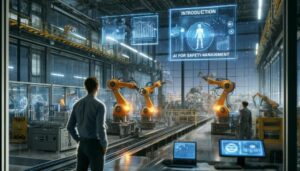
- Building Information Modeling (BIM): The New Construction Command Center
BIM isn’t just a digital 3D model. It’s a central hub for collaboration, integrating design, scheduling, cost control, and life-recyclable management. It enables teams to:
- Detects design clashes before breaking ground.
- Forecast materials and costs with 5D BIM.
- Maintain buildings post-completion through 6D lifecycle data.
Strategic Value: BIM gives construction companies a competitive edge during bidding. Clients are more likely to choose contractors who can reduce risk, communicate clearly, and deliver efficiently.
Image idea: BIM digital model with cost and scheduling data on screen.
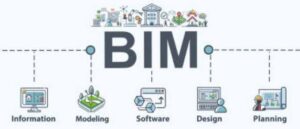
- Drones, Robotics & Automation: Precision Meets Performance
Drones now scan and map entire sites in minutes, feeding live data into project dashboards. Robotic bricklayers work twice as fast as humans, and autonomous bulldozers move earth with GPS-guided accuracy.
Benefits include:
- Faster project timelines
- Reduced labor dependency
- Enhanced site safety
From a marketing lens, showcasing automated equipment and drones in action provides visually compelling content that reinforces your brand’s innovation credentials.
Image idea: Drone mapping a construction site with autonomous machines at work.
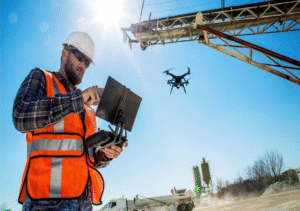
- Modular Construction & 3D Printing: Faster, Greener, Smarter
Modular and 3D-printed buildings are more than just trendy solutions—they’re pragmatic responses to labor shortages, high material costs, and sustainability demands.
- 3D printing reduces material waste by up to 60%.
- Modular construction shortens timelines by 30–50%.
- Controlled factory environments ensure consistent quality.
Strategic Narrative: Position your firm as a leader in modern methods of construction (MMC) by emphasizing reduced timelines, lower costs, and greener solutions.
Image idea: A 3D-printed house under construction or modular units being assembled.
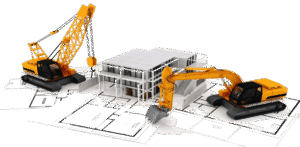
- Internet of Things (IoT): The Connected Job Site
Smart wearable, GPS-tracked assets, and environmental sensors are becoming standard features of high-performance construction sites.
IoT delivers:
- Real-time equipment tracking to reduce theft and downtime.
- Worker safety monitoring (e.g., heart rate, proximity to hazards).
- Predictive maintenance alerts to avoid equipment failure.
Client-facing messaging: A connected job site isn’t just efficient—it’s safer, smarter, and more accountable.
Image idea: Smart wearable gear with live data feed to a site manager’s tablet.
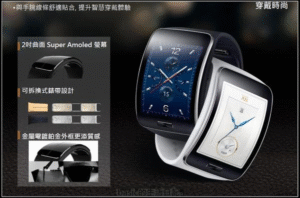
![]()
- Augmented Reality (AR) and Virtual Reality (VR): Enhancing Design & Experience
AR and VR are not just for gaming—they are revolutionizing how buildings are planned and sold.
Applications include:
- Immersive walk through of inbuilt spaces.
- Virtual training environments for workers.
- On-site AR overlays to verify construction accuracy in real time.
Branding Advantage: Use immersive tech demos to win over stakeholders, investors, and clients. These tools bring blueprints to life, creating emotional engagement long before a foundation is laid.
Image idea: Worker using AR headset to visualize building layout on-site.

- Block chain & Smart Contracts: Transparency and Trust
In an industry plagued by cost overruns and disputes, block chain offers clarity.
- Smart contracts release payments automatically when milestones are reached.
- Every transaction is traceable, reducing fraud and dispute resolution costs.
- Enhances trust between developers, contractors, and clients.
Strategic Appeal: Being a “transparent contractor” builds long-term relationships with clients who value integrity and accountability.
Image idea: Smart contract dashboard linked to construction milestones.

Conclusion: Innovation Is No Longer Optional
In 2025, staying competitive in construction is about more than having the right crew—it’s about having the right tech strategy.
As a strategist, I advise firms to:
- Integrate technology into their core value proposition, not just operations.
- Invest in staff training to ensure adoption isn’t just cosmetic.
- Tell a compelling innovation story—prospects want to know how you build smarter, not just what you build.
Whether you’re a general contractor, a developer, or a construction tech vendor, your future growth hinges on how well you adapt—and how effectively you communicate that adaptation.
The construction site of the future isn’t just being built. It’s being coded, automated, printed, and optimized.


